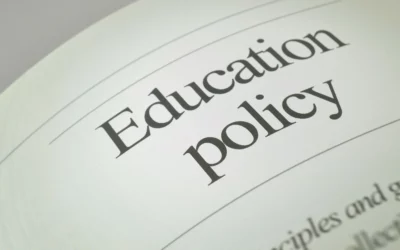
Written by William C. Duncan
August 16, 2023

Last week, the Utah Supreme Court held oral arguments in a challenge to the state’s abortion regulations, Planned Parenthood v. Utah. Each party was given 20 minutes to make its argument and to respond to questions from the judges, but Chief Justice Matthew Durrant signaled at the outset that the arguments might take more time. In fact, the total argument took more than four hours, nearly all of which consisted of the attorneys representing the state and Planned Parenthood responding to questions from the justices.
The case began in June 2022 after the U.S. Supreme Court overruled its previous abortion decisions, Roe v. Wade and Planned Parenthood v. Casey. In the 2022 decision, Dobbs v. Jackson Women’s Health Organization, the court ruled that the U.S. Constitution could not be interpreted to prevent the states from regulating abortions. Utah’s Legislature had prepared for this eventuality, enacting a statute to go into effect when Roe and Casey were overruled that prohibited abortions, except in rare instances where a pregnancy was the result of rape or incest or where a pregnancy threatens the life of the mother or would cause her serious injury.
Directly after the Dobbs decision, Utah’s law became operative, but Utah’s chapter of Planned Parenthood brought a lawsuit challenging the law as a violation of Utah’s constitution. A trial court judge in Salt Lake immediately determined the lawsuit raised serious constitutional questions and issued an injunction to prevent the state from enforcing the law. That injunction is still in effect.
Last week’s hearing considered whether that injunction should be ended so the law can be enforced. Behind that question, of course, is whether there is any reason to believe that the Utah Constitution recognizes a broad right to abortion. If it does not, the injunction should be lifted and the law enforced.
The hurdle for Planned Parenthood in the case is the Utah Supreme Court’s careful adherence to the meaning of the state constitution as generally understood at the time it was ratified. Thus, many of the questions posed by the justices in last week’s argument focused on the way the constitution can appropriately be understood.
The state, relying on precedent of the court, is arguing that the appropriate approach to determining whether the Utah Constitution contains a broad right to abortion is to first look at the text of its provisions. That is not to say that merely searching for the word abortion in the constitution is all the court needs to do. Some provisions of the state constitution protect rights that are not explicitly listed, but in order to be faithful to the meaning of a written constitution, these “unenumerated” provisions would need to be demonstrated to be central to the historical understanding of a phrase such as “individual rights.”
So, the justices last week focused many questions on the nature of the rights protected in the Utah Constitution, specifically the concept of what “level of generalization” should be used to identify a protected right.
To illustrate, the key Utah Supreme Court decision on this point involved a mother whose child was removed by state child welfare officials because the state believed removal was in the child’s best interest. The court recognized that parents have a constitutional right to maintain a relationship with their children if the parents are not unfit. Interestingly, in that case, the court specifically criticized the Roe v. Wade decision, which found the U.S. Constitution recognized a “right of privacy” broad enough to include a mother’s decision to abort.
So, a high level of generalization would be one in which a court applies a broad right of privacy that could cover a wide range of issues from personal identifying information to use of contraception to decisions to abort an unborn child. At this level of generalization, courts have wide latitude to determine whether an asserted practice is sufficiently significant enough to be included in the right.
By contrast, the Utah parental rights decision is far less general. It identifies a narrow right – the ability of a fit parent to maintain a relationship with her child – which is more difficult to generalize to cover other, different situations.
The implication of these alternative approaches to the Utah abortion case are obvious. If the justices depart from prior decisions and identify the relevant constitutional principle as a broad right like “personal autonomy,” the decision would be very different than if the justices are trying to determine if the provisions dating back to the 1890s were understood to preclude any regulation of abortion.
These are not academic questions. The court’s approach has significant ramifications for separation of powers, judicial restraint, and the protection of self-government.
It can be attractive to imagine that difficult questions can be settled by enlightened application of aspirational terms like justice, equality or autonomy. The risk inherent in this approach, however, is that it could upset the careful balance of authority and accountability embodied in our written state and federal constitutions, which allot to representative branches the responsibility to decide crucial questions of policy while ensuring some clearly enumerated rights are protected from interference. The enumeration is critical because it is the citizens of the state, the ratifiers of the constitution, who have specified that these rights deserve protection.
The alternative, where judges are empowered to pursue ideological goals by invoking broad principles, can be satisfying when we approve of the results of their decisions, but it is risky to delegate that kind of authority without clear limits.

Insights: analysis, research, and informed commentary from Sutherland experts. For elected officials and public policy professionals.

- The Utah Supreme Court has just concluded oral arguments in a challenge to the state’s abortion regulations.
- A key question is whether the Constitution protects the specific rights recognized by the citizens who ratified the Constitution or whether it embodies broad principles whose contours are to be determined by judicial decisions.
- What is at stake in answering this question? The principle of self-government.
Read More
Education policy to consider during the 2024 election season
Here’s a look at what each presidential candidate is likely to focus on in education, given their track records and campaign platforms.
Ignoring the text of the Constitution is a mistake
A written Constitution is entirely superfluous if the document is simply meant to give the people what they want.
What you need to know about election integrity
It should be easy to vote and hard to cheat. This oft-quoted phrase has been articulated as a guiding principle by many elected officials wading into voting and election policy debates in recent years. So why has this issue been so contentious, and what’s the solution?


